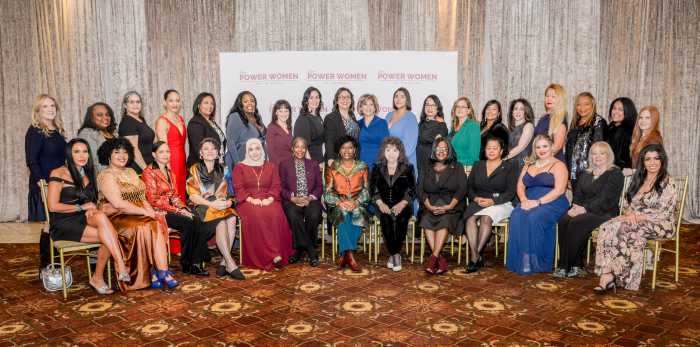Costa Rican President Luis Guillermo Solís. | US DEPARTMENT OF HOMELAND SECURITY
Over just four days — January 8 through 11 — major courts on three continents issued rulings affecting the rights of tens of millions of LGBTQ people. On January 8, the Supreme Court of India ordered reconsideration of the 2014 decision that restored the country’s law against gay sex. The following day, the Inter-American Court of Human Rights advised Costa Rica — and thus another 15 countries in Central and South America bound by the American Convention on Human Rights that do not yet have marriage equality — that same-sex couples are entitled to marry and also ruled that transgender people are entitled to get legal name changes without having to undergo sex reassignment surgery. And on January 11, one of the advocates general of the European Court of Justice, responding to a request for a preliminary ruling from the Constitutional Court of Romania, advised the ECJ that same-sex spouses of the citizens of member nations must be treated the same as different-sex spouses under a European Union directive governing movement among its member states.
With 1.3 billion people, India has the second largest population in the world, while the European Union member countries have more than 500 million residents and the countries within the Inter-American Union, not including the US and Canada, have a combined population of more than 600 million. These three rulings, then, affect a wide swath of the planet’s roughly 7.6 billion people, and marriage equality may soon become the norm throughout the Western Hemisphere, with only a few holdouts among states that do not recognize the Inter-American Court’s jurisdiction.
The Indian ruling is yet another step in a complicated and long-running story. In 1860, under British administration, the Indian penal code was adopted with Section 377 providing, “Whoever voluntarily has carnal intercourse against the order of nature with any man, woman, or animal shall be punished with imprisonment for life, or with imprisonment of either description for a term which may extend to 10 years, and shall also be liable to fine.” This colonial enactment, carried over into national law when India became independent after World War II, has been interpreted to outlaw all same-sex oral and anal intercourse. Although infrequently enforced, it has had the same stigmatizing effect as anti-sodomy laws in Western societies did through much of the 20th century.
Progress in India, Latin America, and the European Union
Many LGBTQ people in India rejoiced in a highly public way in 2009 when the Delhi High Court, responding to a lawsuit filed by the NAZ Foundation, an HIV/AIDS advocacy group, ruled that Section 377 was unconstitutional regarding private, consensual adult same-sex intercourse. The government initiated no appeal, so many saw the lengthy, scholarly ruling as final.
A group of religious and social conservatives, however, led by Hindu astrologist Suresh Kumar Koushal, brought an appeal to the Supreme Court, where a two-judge bench reversed the Delhi High Court ruling in 2014, holding that the Indian Constitution did not bar the old colonial law and rejecting the High Court’s reliance on decisions from other nations, including the US. Claiming that are very few homosexuals as a proportion of the population, the Supreme Court held that the sodomy issue was not a matter of great importance and was for the legislature, not the courts, to decide.
The effort to obtain further review from a larger panel of the 26-member court has been time-consuming, carried out on separate tracks by both the NAZ Foundation and a new group of plaintiffs, the latter of which argued that other recent rulings — most notably a later 2014 ruling on the rights of transgender people — cast significant doubt on the Koushal decision’s reasoning.
Responding to the new plaintiffs, the Supreme Court’s January 8 Order in Johar v. Union of India Ministry of Law and Justice, by a three judge panel including Chief Justice Dipak Misra, provided an extensive summary of the arguments against the constitutionality of Section 377, quoting from the 2014 transgender ruling and a 2017 privacy case, and granted the petitioners’ request that a larger panel of the court be convened to reconsider Koushal. Interestingly, nobody from the government appeared to oppose the request for reconsideration.
A different bench of the Supreme Court is separately considering the NAZ Foundation petition, and the Indian press has speculated that the two cases could be combined before that larger panel.
Indian jurisprudence is famous for its slow motion, but there was some optimistic speculation that an opinion from a larger bench may emerge later this year. In light of the serious criticisms of the Koushal decision by other benches of the court, commentators were upbeat that the original Delhi High Court’s order striking down criminalization of gay sex will ultimately prevail.
Marriage Equality in the Americas The Inter-American Court’s ruling on January 9 came in response to a petition submitted two years ago by Luis Guillermo Solís, Costa Rica’s president, who had run for office on a pledge to expand LGBTQ rights but soon encountered legislative intransigence. Inquiring about both marriage equality and transgender rights, Solís received a strong affirmation on both counts from the court, which sits in Costa Rica’s capital city, San José. According to translations of the opinion published in English-language media sources, the court said that governments subject to the American Convention on Human Rights “must recognize and guarantee all the rights that are derived from a family bond between people of the same sex,” and that establishing a separate institution for same-sex couples, such as civil unions, was not adequate from the point of view of legal equality. Recognizing the legislative intransigence encountered in Costa Rica and many other Latin American countries, where the Catholic Church has a heavy influence on social policy, the court recommended that governments pass “temporary decrees” while new legislation is considered.
The Inter-American Court, in common with the European Court of Human Rights, is not empowered directly to order a government to do anything. Sometimes the court has resorted to demanding that governments explain why they have not complied with its rulings. Solís, however, reacted to the decision by calling for full compliance across Latin America.
“Costa Rica and the other countries that have accepted the jurisdiction of the Inter-American Court must fully comply with the court’s opinion, respecting each country’s processing time, jurisdictional and administrative spaces,” the Tico Times reported Solís telling reporters, even while acknowledging that his nation’s action would require a “gradual process” of negotiation among the branches of government and political parties.
The court also found that transgender people, as a matter of human rights, should get official recognition of their gender identity, without any requirement for surgical gender confirmation procedures
“Love is a human condition that should be respected, without discrimination of any kind,” the Costa Rican government said in an official statement. “The State confirms its commitment to comply.”
The countries that are legally bound by rulings of the court include Argentina, Barbados, Bolivia, Brazil, Chile, Colombia, the Dominican Republic, Ecuador, El Salvador, Guatemala, Haiti, Honduras, Mexico, Nicaragua, Panama, Paraguay, Peru, Surinam, and Uruguay. Some of those countries still penalize gay sex, while others — Colombia, Brazil, Uruguay, Argentina, and many states in Mexico, where a complex legal process has been unfolding for several years — already have marriage equality. The Inter-American Court’s ruling may hasten marriage equality’s spread to the remaining Mexican states, and litigation on this issue is now pending in the Supreme Court of Panama.
Marriage Equality in the European Union
In the European Union, Advocate General Melchior Wathelet’s preliminary ruling in the case of Relu Adrian Coman, a Romanian citizen who married Robert Clabourn Hamilton, an American, in Brussels while Coman was living there and working for a European Union agency, may portend a significant advance for marriage equality on that continent. Coman sought to bring his spouse back home to Romania, but the government was unwilling to issue a spousal visa. Coman brought his case to the Constitutional Court of Romania, which referred the issue to the European Court of Justice for a determination of its obligations as a member of the Union. If the court decides to follow the advocate general’s recommendation, its ruling becomes law throughout the European Union.
Wathelet’s opinion is narrow and technical because it doesn’t address the broad question of rights, but rather the narrower issue of interpreting the European Union’s policy guaranteeing freedom of movement among member states. “Free movement of persons,” including their families, is recognized as “one of the fundamental freedoms of the internal market” created by the union.
Romanian law defines marriage as the union of a man and a woman and specifically states that same-sex couples may not marry. There is also no registered partnership status for same-sex couples.
Wathelet quoted an earlier decision stating that “EU law must be interpreted ‘in the light of present day circumstances,’ that is to say, taking the ‘modern reality’ of the Union into account.” The aim in this is to avoid the law becoming static and placing a drag on economic and social development among the member states.
Noting that since 2004, the number of member states with marriage equality has grown from two to 11, with Austria joining that group over the next year, Wathelet wrote, “That legal recognition of same-sex marriage does no more than reflect a general development in society with regard to the question. Statistical investigations confirm it; the authorization of marriage between persons of the same sex in a referendum in Ireland also serves as an illustration. While different perspectives on the matter still remain, including within the Union, the development nonetheless forms part of a general movement. In fact, this kind of marriage is now recognized in all continents. It is not something associated with a specific culture or history; on the contrary, it corresponds to a universal recognition of the diversity of families.”
Noting a growing body of rulings from the European Court of Human Rights protecting same-sex partners, Wathelet recommended that the court answer the Romanian Constitutional Court’s questions by holding that “the term ‘spouse’ applies to a national of a third State of the same sex as the citizen of the European Union to whom he or she is married” for purposes of complying with the European Union’s freedom of movement directive. As a result, Coman’s marriage to an American citizen while living in Belgium, a European Union country that allows same-sex marriages, gives his spouse a derivative right under the union’s directive to automatically obtain a spousal visa to enter and live in Romania. Since Hamilton himself is not a European citizen, his right is not direct but instead results from Coman’s right to have Romania respect his marriage and family life.
Reflecting the social divisions within the Union, several Eastern European nations — Latvia, Hungary, Poland, and Romania — opposed this conclusion, while it was supported by submissions from the Netherlands and the European Commission.

















